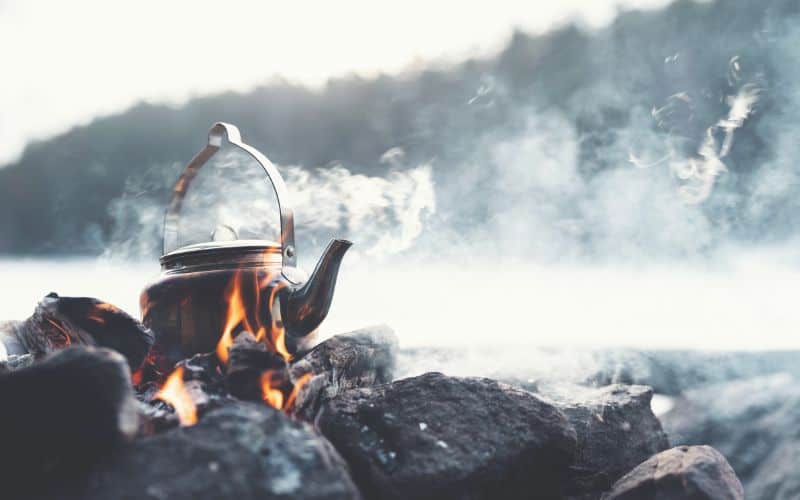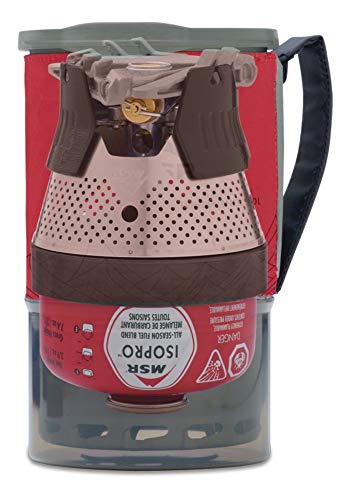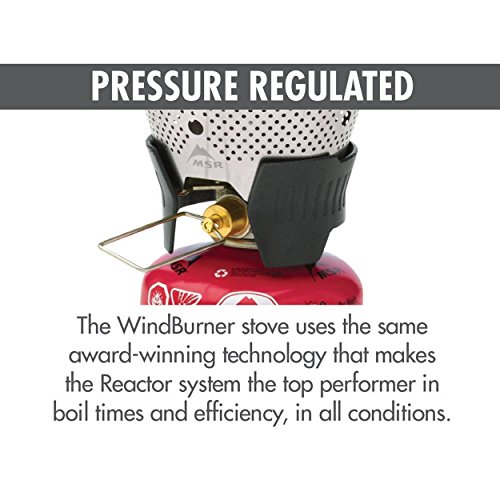Solar water heating bags? Camping stoves? Kettles? FHR’s? There are many methods you can use to boil water or cook food while camping. All of these will do the trick, but the time they take to deliver boiling water for your morning cup of coffee or evening meal varies to a large degree.
In this post, we run the rule over a total of eleven methods, rating their desirability by boil time, convenience, and cost, and highlighting any notable drawbacks that make them less suitable for camping.
Table of Contents
1. Electric Camping Kettle
If you’re at a campground where you have access to an electrical hookup or have a generator along for the trip, there’s no easier way to get boiled water than by using an electric kettle.
A kettle might not be the most outdoor-worthy or portable piece of kit, but it will boil water quickly – and large quantities of it, too. They’re also uber-convenient, very easy to use, and won’t set you back a large chunk of your monthly paycheck.
The downside is you’ll need electricity, so they’re not an option for backcountry camping unless you plan on lugging a generator along for the trip.
We’re big fans of the T-Magitic Folding Kettle, which takes up the least room of any kettle we’ve come across. To get around the need for electricity, you could opt for a solar-powered kettle like the 4Patriots Sun Kettle, though this will entail a little more expense and a little longer wait time (we’re talking a few hours rather than minutes!).
Pros
- Affordable
- Quickest method of heating water on our list (great for that morning coffee!)
- Will purify water
Cons
- Electricity required
- Bulky
2. Camping Stove
A good ol’ camping stove is the most common method for boiling H2O while camping.
There are several types of portable stove you could use – an alcohol stove, a solid-fuel stove, a biofuel stove, a liquid-fuel stove, a propane stove, or a portable canister stove. Each type has various benefits and drawbacks.
For us, the most reliable and effective of the bunch for backpacking is a canister stove like the MSR Pocket Rocket 2 or MSR Windburner. For car camping, we prefer a heavier-duty propane stove like the Camp Chef Universal.
If you’d prefer to do without the canisters, you could opt for a wood-burning stove like the Solo Stove Lite. This may just look like an elaborate tin can, but its clever dual-combustion chambers mean it can boil water in just 8 minutes.
Pros
- Relatively quick
- Good for cooking and making coffee or other hot drinks
Cons
- Can be bulky
- Open flame poses a fire risk
- Fuel required
3. Internal-Flame Kettle (aka Ghillie Kettle)
This old-school boiling apparatus is perhaps the most aesthetic of the bunch. But is it as efficient and effective as other options?
These kettles consist of a chamber with a (usually fixed) recess at the base where you can light a flame, using either alcohol or biomass such as twigs and leaves. Instead of just heating the base, the flame rises inside the liquid-holding chamber, so heats your water up far quicker than a standard camping kettle.
On the downside, ghillie kettles are one of the most expensive options, and also the bulkiest.
Our favorite internal-flame kettle? The Kelly Kettle Base Camp.
Pros
- Burns on biomass instead of gas (a more eco-friendly alternative)
- Looks cool!
- Effective in bad weather
- No electricity required
Cons
- Very bulky
- Heavy
- Expensive
4. Jetboil Stove System
The Jetboil System has revolutionized the way in which many outdoor enthusiasts do their backcountry cooking since it first hit the market in 2001.
The Jetboil Flash can deliver piping hot H2O in 1-2 minutes and more elaborate versions, like the Jetboil Sumo, come with awesome features like incremental temperature control, which allow for more precise cooking.
Jetboil systems certainly aren’t the cheapest, but they’re a great investment if you’re a regular camper. They hook up to a fuel source and use a very concentrated heat area to boil your water extremely quickly.
Pros
- Fast!
- Can be used to cook meals and for boiling water
Cons
- Expensive
- Quite bulky
5. Regular Pot
Does it get any easier than suspending a simple pot filled with water over your campfire and waiting for it to boil?
This method might take a little longer than with fancier equipment, but the tools (pot only!) are cheap, it’s far from labor intensive, and you don’t need any source of electricity.
Our favorite pots? The GSI Halulite is our pick of the bunch for solo campers and the MSR Ceramic 2.5-Liter Cook Pot is our top choice for groups.
Pros
- Only a small pot and fire required
- Can be hung over coals or used on a charcoal grill
Cons
- Open fires aren’t permitted in many national parks
- Quite slow
6. Electric Pot
Electric pots are similar to electric kettles in that they’re bulky and fairly heavy and, of course, you’ll need a power source to use one. Unlike an electric kettle, however, pots can cost a small fortune. On the plus side, their open top makes them capable of cooking camping meals as well as simply boiling H2O, which isn’t the case with kettles.
A good electric pot should boil water in less than five minutes, meaning this is one of the most efficient options on our list.
Our favorite electric pot for car camping is the RoadPro Portable, which holds 2 quarts and runs off the 12-volt power outlet in your car.
Pros
- Fast
- Great for cooking meals
Cons
- Power outlet required
- Bulky
- Can be pricey
7. Stovetop Coffee Pot
If your only concern is getting that morning mug of mud quickly, the stovetop coffee pot is a great option.
While bulky and not lightning-fast, these pots are low-maintenance, easy to use, and make a great cup of the brown stuff. SCPs can also be used to boil water for other things, functioning just like a regular camping kettle when you remove the coffee filter from the top, so they’re a little more versatile than moka pots.
Our favorite stovetop pot is the stainless steel, 12-cup Coletti Bozeman.
Pros
- No electricity needed
- Can also be used as a simple kettle to heat water
- Affordable
Cons
- Quite bulky
8. Car Kettle
If we’re car camping, our go-to water boiler is the Spardar Car Kettle. This sleek little kettle can be plugged directly into the 12V outlet (the cigarette lighter) in your vehicle and will give you boiling water in 16 to 20 minutes. While this makes it one of the slower options, it will give you plenty of time to take care of camp chores while you wait!
As with regular kettles, this won’t help you much with meal prep if you’re making more elaborate dishes, but it’s ideal for coffee and tea, noodles, and dehydrated or freeze-dried meals.
Pros
- Vehicle required
- No fire hazard
- No fuel needed
- Uses car’s auxiliary power outlet
Cons
- Slow to boil
- Pricier than regular electric kettles
- Can’t be used to cook meals
9. Traditional Kettle
Is there any more aesthetic way to boil water at your campsite than using an old-school, traditional kettle?
While not as quick as electric kettles, traditional kettles will give you boiling water in just 4-6 minutes, depending on which type of fuel you use. And for that, you have various options. You could use a charcoal grill, campfire, gas-burning stove, alcohol stove, or a biomass stove.
Traditional kettles are bulky and often heavy, and can’t be used to make fancy meals, but they’re ideal for tea, coffee, other hot drinks, and simple packaged meals like ramen noodles.
Keen on a kettle? Check out the FireMaple Portable for aesthetics or the Redcamp Kettle for something more affordable.
Pros
- Look cool
- Relatively quick
Cons
- Bulky
- Heavy
10. Bucket Heater
If you need to heat large quantities of water, bucket heaters are your best option.
Bucket heaters consist of two things: a bucket and a heating mechanism, which usually takes the form of a kind of wand. You simply submerge the wand in your bucket of water, flick a switch, and kick back and wait for your H2O to heat up. Easy!
This is our favorite option for heating large quantities of water, but there are a few downsides. Bucket heaters are bulky, slow, and require electricity, and most won’t heat to a boil. For meal prep and morning coffee, you’ll need to bring along other implements.
Pros
- Ideal for large groups
- No fire hazard
- Perfect for bathing, laundry, and washing dishes
Cons
- Power supply needed
- Only give you hot or lukewarm water
11. Flameless Ration Heater
If it’s good enough for the military, why not give it a try?
Flameless ration heaters (FRH) are self-heating food packaging sachets that have been used by the US military since the 1990s. In just over ten minutes, one of these little wonders can heat your H2O (or meal) to around 100 °F.
Pros
- Flameless
- Convenient
- Packable
Cons
- Won’t heat water enough to purify it
- Better as a backup method rather than your primary cooking tool
- Slow
FAQs
What’s the best way to boil water when you’re camping?
What’s the best way to skin a cat?
Jokes aside, there are lots of different ways to boil water and whether or not any one is best for you depends on several variables. These include your budget, whether you’re backpacking or car camping, how much patience you have, the size of your camping crew, and whether you need hot water for meals and coffee or just for bathing or washing dishes and laundry.
How long does it take water to boil?
This entirely depends on the boiling method you use and, in some cases, ambient temperatures.
The quickest method is, without doubt, with an electric kettle or Jetboil. Depending on how much water you fill it with this could take anywhere from 1.5 to 4 minutes. The slowest method is the bucket heater or a solar shower (not featured above for precisely this reason!).
At higher altitudes, lower atmospheric pressure means heated H2O reaches boiling point more quickly.
At sea level, water boils at 212 degrees Fahrenheit/100 degrees celsius. At 5,000 feet, it boils at 203 degrees Fahrenheit. Up at 10,000 feet, it boils at 194 degrees F. Because the boiling point is lower at altitude, however, food takes longer to cook. At 10,000 feet, for example, where water boils at almost twenty degrees less than at sea level, cooking time will more than double.
Does boiling water make it safe to drink?
Boiling is the safest and most effective water purification method. Bringing drinking water taken from wild sources to a boil, then leaving it at a rolling boil for 3-5 minutes, will eliminate protozoa, pathogens, and viruses.
How to Store Your Water?
Once you’ve got your water boiled and free of pathogens, remember to take with you some form of receptacle to store your H2O – whether thats a simple water bottle or a bigger container for camping water.
boil water camping: final thoughts
Knowing how to boil water when camping is an essential skill that every avid camper and occasional weekend warrior ought to know. The ability to get that morning cup of joe ready and those evening eats into the bellies of your hungry camping crew, after all, will make for a far more enjoyable camping experience for all!
There are multiple ways to boil or heat water, and the best for you will depend on what type of camping you’re doing and what you’re boiling it for. As the above list demonstrates, however, there are plenty of methods to choose from, so you can take your pick based on your needs and budget.
If you liked this article or have any questions, drop us a line in the box below. And if you’d like to share it with your friends, please do!





















































![COLETTI Bozeman Camping Coffee Pot — America’s Favorite Percolator [12 cup]](https://m.media-amazon.com/images/I/31B4FWqle1S.jpg)
![COLETTI Bozeman Camping Coffee Pot — America’s Favorite Percolator [12 cup]](https://m.media-amazon.com/images/I/41uw6vR8NeL.jpg)
![COLETTI Bozeman Camping Coffee Pot — America’s Favorite Percolator [12 cup]](https://m.media-amazon.com/images/I/41mTfOtZ49L.jpg)
![COLETTI Bozeman Camping Coffee Pot — America’s Favorite Percolator [12 cup]](https://m.media-amazon.com/images/I/41PhBmxo51L.jpg)
![COLETTI Bozeman Camping Coffee Pot — America’s Favorite Percolator [12 cup]](https://m.media-amazon.com/images/I/517o1O8k0GL.jpg)
![COLETTI Bozeman Camping Coffee Pot — America’s Favorite Percolator [12 cup]](https://m.media-amazon.com/images/I/31B4FWqle1S._SL160_.jpg)
![COLETTI Bozeman Camping Coffee Pot — America’s Favorite Percolator [12 cup]](https://m.media-amazon.com/images/I/41uw6vR8NeL._SL160_.jpg)
![COLETTI Bozeman Camping Coffee Pot — America’s Favorite Percolator [12 cup]](https://m.media-amazon.com/images/I/41mTfOtZ49L._SL160_.jpg)
![COLETTI Bozeman Camping Coffee Pot — America’s Favorite Percolator [12 cup]](https://m.media-amazon.com/images/I/41PhBmxo51L._SL160_.jpg)
![COLETTI Bozeman Camping Coffee Pot — America’s Favorite Percolator [12 cup]](https://m.media-amazon.com/images/I/517o1O8k0GL._SL160_.jpg)


























